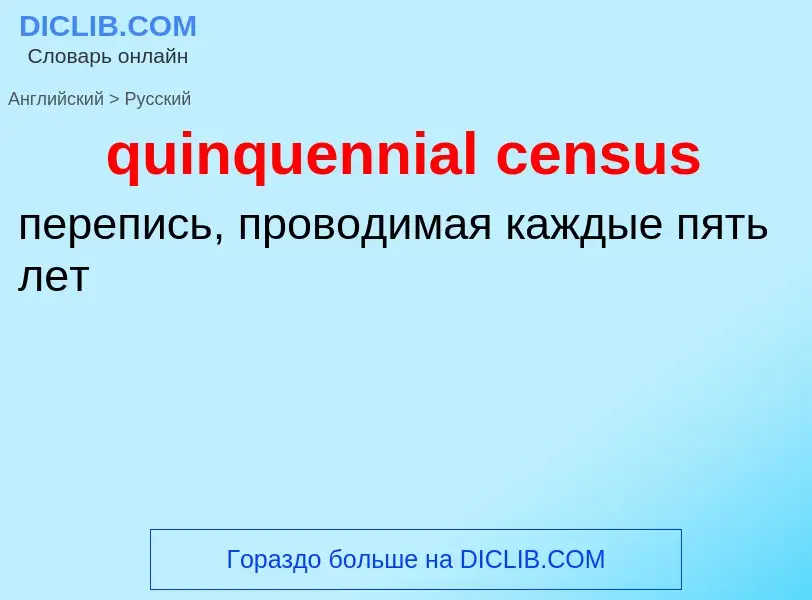Tradução e análise de palavras por inteligência artificial ChatGPT
Nesta página você pode obter uma análise detalhada de uma palavra ou frase, produzida usando a melhor tecnologia de inteligência artificial até o momento:
- como a palavra é usada
- frequência de uso
- é usado com mais frequência na fala oral ou escrita
- opções de tradução de palavras
- exemplos de uso (várias frases com tradução)
- etimologia
quinquennial census - tradução para russo
населённый пункт, включённый в список городов
Definição
Wikipédia
Statistics Canada conducts a national census of population and census of agriculture every five years and releases the data with a two-year lag.
The Census of Population provides demographic and statistical data that is used to plan public services such as health care, education, and transportation; determine federal transfer payments; and determine the number of Members of Parliament for each province and territory. The Census of Population is the primary source of sociodemographic data for specific population groups, such as lone-parent families, Indigenous peoples, immigrants, seniors and language groups. Data from the census is also used to assess the economic state of the country, including the economic conditions of immigrants over time, and labour market activity of communities and specific populations. Census data are also leveraged to develop socioeconomic status indicators in support of analysis of various impacts on education achievement and outcomes. At a sub-national level, two provinces (Alberta and Saskatchewan) and two territories (Nunavut and Yukon) have legislation that allows local governments to conduct their own municipal censuses.
The Census of Population gathers important data on a variety of topics, including:
- Indigenous peoples
- Education, training and learning
- Ethnic diversity and immigration
- Families, households and housing
- Income, pensions, spending and wealth
- Labour
- Languages
- Population and demography
There have been questions about religion in Canada in the national census since 1871. In 1951, when the frequency of conducting the national census changed from being collected every 10 years to every 5 years, questions about religion were still asked only every 10 years.
Questions on religion were included in the last census, which occurred in 2021, but it will not be included in the 2026 census as questions on religion are included in census years that end in “1”.
The census typically undercounts the population by ~2–4% because people are not at home, have trouble understanding the census, or census enumerators are unable to find the people.

